The UK government has reiterated that decisions on strike-capable uncrewed aircraft for the Queen Elizabeth-class carriers remain subject to the ongoing Strategic Defence Review, despite growing interest from industry and long-standing planning within the Royal Navy.
In a written answer to Parliament, Minister of State for Defence Maria Eagle said:
“The Strategic Defence Review will inform any requirement for additional strike capabilities for the Queen Elizabeth Class. In the interim, the Royal Navy continues to investigate emerging technologies to understand how they can contribute to enhancing operational advantage.”
Among the technologies being explored are Fixed Wing Autonomous Collaborative Platforms — a reference that industry insiders suggest may include systems such as General Atomics’ Gambit 5, a carrier-capable Uncrewed Combat Aerial Vehicle (UCAV) pitched as a potential complement to the UK’s F-35B fleet.
Speaking about such systems, Eagle added: “Fixed Wing Autonomous Collaborative Platforms have the potential to enhance operational advantage, hence, will be evaluated in collaboration with the Royal Air Force.”
Although no decision has yet been made, UK interest in expanding uncrewed carrier aviation is well established. Under the previous government, then Defence Minister James Cartlidge confirmed that the Queen Elizabeth-class was built with future retrofitting in mind, saying: “The Queen Elizabeth Class Aircraft Carriers (QEC) were built to allow for capability changes over the lifetime of these ships… and this includes a strong focus on uncrewed air systems.”
Could British carriers soon host advanced jet combat drones?
At last year’s ‘Combined Naval Event’ in Farnborough, Colonel Phil Kelly, Royal Navy Head of Carrier Strike and Maritime Aviation, outlined this vision under the banner of the Future Maritime Aviation Force (FMAF) and its internal “Project Ark Royal”. He warned of current limitations, stating: “F-35 mass will not reach level required to resource both QEC with full Combat Air potential.”
He argued for automation and uncrewed platforms to fill this gap, stressing the need to:
“Increase our range, endurance, and persistence in order to build advantage.”
General Atomics, builder of the MQ-9 Reaper and MQ-20 Avenger, has been vocal in promoting their Gambit 5 as a candidate to meet these emerging UK requirements.
“We’ve been thinking of this as a new concept we’re calling Gambit 5, designed for carrier launch and recovery,” said company spokesperson C. Mark Brinkley.
“It could be ISR-focused, like Gambit 1, or some kind of hybrid.”
The platform builds on 15 years of UCAV experience, including 37,000 flight hours with the MQ-20. General Atomics touts its capability in navigation, autonomy, and relative positioning as essential for future carrier-based drone operations.
While no firm procurement decision has been made, the Ministry of Defence’s answers — and the volume of supporting activity from industry, Parliament and Navy leadership — make clear that options to expand the combat reach of Britain’s carriers remain a serious area of development. As Eagle concluded:
“Decisions on future capabilities are subject to the outcome of the Strategic Defence Review, which is looking at the threats we face and the capabilities we need to meet them.”


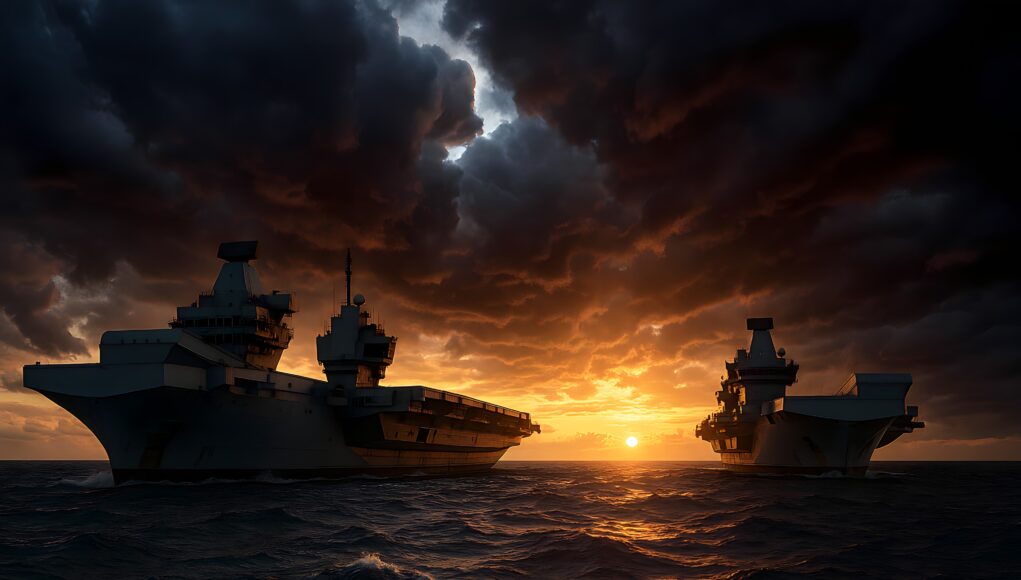


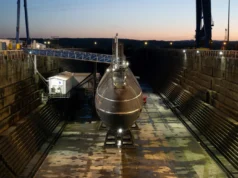

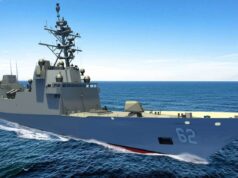
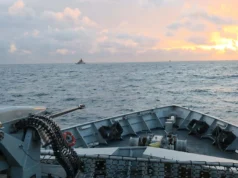

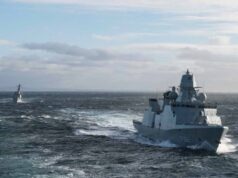
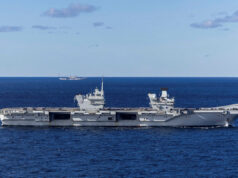


Evaluations,review’s coalition of the willing! How about we actually get on and DO something instead of blah blah and then have anther review on the previous one🙄
This is all very positive, It’s acknowledging the future requirements and developing systems to counter the perceivable threats both domestically and abroad. Proof that the UK Royal Navy Carrier capability can fulfil it’s promise to protect and serve the population in the age old way we have become accustomed to.
“Keeping an even keel in the roughest of seas”.
You would hope that we could get something from BAE’s ACP program so we don’t have to rely on General Dynamics for anything else.
They’ll hide behind the SDR as long as they can.
Fact is, not a single new new ship, plane, helicopter, Armoured vehicle gas been ordered beyond what was already in the program.
“ subject to the ongoing Strategic Defence Review” I’m really not sure what is going on with the SDR, but I have my suspicions..I think everyone is Now essentially acknowledging that nato is moving to a fudged 5% GDP floor by 2032…fudged but still 5%. The fudge is each nation will need to spend 3.5% GDP on direct defence..then another 1.5% on wider security and defence ( donations to Ukraine..defence industrial development spending etc )..word on the street this is coming at the 25th June Hague NATO summit ( and word is it’s probably already settled and agreed..to keep the US in Europe). So there is no way the government is likely to publish an SDR based on 2.5% GDP until 2030 just before nato sets a hard 3.5% +1.5% floor for 2032…. I think it’s being re written to the likely new NATO floor and I think it’s going to be the biggest shift since the end of the Cold War and the peace dividend, I think this is why we are suddenly getting left field oddities like 2000km + medium/intermediate range ballistics missiles and KRH suddenly looking like they will stay a MBT regiment after all…I predict it will drop just after the NATO summit..so that’s my bet.
I’d thought before Whitsun recess, so they can bugger off and avoid awkward questions.
If it was not for NATO I would go with you but I honestly think it’s because they know what is coming in the NATO summit and they don’t want to look like idiots when they publish is defence review that says 2.5% is fine for the risk and a month later NATO comes out and says it’s a new Cold War and we have to prepare to fight Russia and china, everyone start spending 5%… it would be an impossible sell to the public in the best of times but if a month before they just published all this bump why 2.5% was fine it would be impossible to sell.
As is I honestly think Jo pubic is in for a shock when he’s informed it’s back to the 1970s and he better practice taking his internal doors off in five mins flat propping them against an internal wall.. as well as the fact the UK is going to have to somehow find an extra 70 billion for defence and security in today’s money by 2032…
Mate. I always respect your views and your positivity. I hope you’re right.
@ Daniele, fingers crossed, at some point the geostrategic “we are heading to a world war if nothing changes” penny has to drop and I’m hoping this years NATO summit is the penny dropping moment.
CR and Jonathon,
Agree w/ your assessment. Presume that MoD related infrastructure issues (accomodations, submarine infrastructure issues, upgrades of road and cargo carrying rail systems, etc.,) will all be well funded when 1.5% of GDP is made available on a continuing basis. Wonder whether ENATO remains a coherent entity if countries such as Hungary, Slovakia and Spain demur re the increase. Does the vote need to be unanimous in order to implement the goal?
Jonathon,
OK, must ask re “… better practice taking his internal doors off in five minutes flat, propping them against an internal wall.” UK Civil Defence guidance? Presumed increased radiation shielding? 🤔
@ USAF
It was the old Cold War protect and survive guidance. In the case of the 5min warning you had to run around your house with a crew driver and take 3 internal doors off then lay them against a wall to create a shelter.. then pile all your possessions up on top of them like some demented pile of stuff in a house clearance sale.. then climb into it… look up protect and survive you can find it on line.. I remember it well.
Also the BBC are reporting that essentially the government spending review is going to be a bloodbath and they are chucking every penny at defence and the NHS and that pretty much every other department is going to be torched.. the bbc are saying the new Whitehall joke is that government will be the NHS and the army and that’s it.
I’d read that, yes.
I’m not entirely sure why as you would expect a public service broadcaster to lean towards labour but for whatever reason they have always been easier on the conservatives and very critical of labour. Same happened under Blair/brown. Just have to wait and see what the facts are and then judge.
Can’t fine that BBC report, Jonathan – got a link, please?
Cheers
I SO hope you are right, but my bet is that it will come to nothing. Yes, on June 25 there will be strong words about standing up to Putin, spending more and pulling our weight, but I can’t see Starmer, Macron, et al, carrying it through. It isn’t in any of their natures to be decisive and they haven’t got the money to do it.
Starmer has shown with the Chagos fiasco that he doesn’t care about this country or the defence thereof. He will fiddle round the edges with some working-up of detailed plans and lots of evaluations and promises of jobs. All designed to let time pass, in the hope that Wilkins Micawber was right and that, “Something will turn up,” to get him off the hook.
I SO hope you are right.
Things are smelling very different, there are so many reports by people that really know that the NATO 5% ( 3.5% +1.5%) is the real deal..there is lots of running around with industrial partners on how to massively increase the UK and European military industrial capacity..even the BBC are reporting that the Rachel reaves spending review is turning into a bomb fire of department budgets all to feed massive uplifts in defence and NHS spending. As a watcher of both defence and health I smell massive change in the air.
Morning Jonathan,
I agree I think there is significant change in the air. The uncertainty introduced by Trump has rattled Europe’s politicians and they now know that they have to do something. The 3.5% + 1.5% rescoped defence budget makes a lot sense. If it is enough we might be able to do enough to maintain a sufficiently creditable deterrence posture to put Russia off trying some stupid. If we fail then the cost will be far far higher in blood and treasure. We spent 48% of GDP at the peak of WW1 and 52% at the peak of WW2. Then you have to factor in the cost of the rebuild post war. For example in the immediate post war period there was a spate of serious rail accidents as the network had been seriously neglected and heavily used during WW2. I believe the cost of recapitalising the railways contributed to their nationalisation 1948. Makes 5% look very very cheap.
Cheers CR
I would rather see us leave NATO than pay 5% of GDP. Total waste of money spending anything close to that even if it is fudged.
It would be like the 70’s and 80’s all over again hollowing out infrastructure spending and investment only to this time be paying to confront an army using donkeys.
Agreed. Spending existing budgets better should be a pre condition for any increase. The idea that having spent £7b.( ships) +£9b( F35) on 2 carriers we really didn’t need, we should spend even more to increase their strike capability is idiotic. A successor to Crowsnest is justified. Fitting EMALS to operate heavy strike drones isn’t
Russia has shown how limited its conventional capability is. NATO doesn’t need to raise budgets to 5% of GDP though some members, eg Germany, need to make good years of failure even to meet the agreed 2% target. Britain doesn’t .
It’s seems that essentially the whole of NATO does not agree..the report is the only hold out nation is Spain.
Always evaluating, instead of using the best of what’s available now and evaluating in the background what’s going to replace it. Come the day we are at war all we’ll be able to field is a force of evaluations, case studies and proof of concepts. Never mind though, plenty of industries will have profited from these never ending evaluations.
Exactly. Which is their primary aim. Channeling pork to their mates.
As ever we agree mate. Defence will have to go to 3.5%, it’s a sensible level.
We must absolutely ensure it isn’t used as an excuse to simply chuck money away on job creation schemes, reinventing the wheel and leave us spending an additional 50 billion, but still with precious little to show for it.
In a not so fantasy fleet, a load out I would love to see for the QE class is as follows.
1x Squadron of 16 F35B
1x Squadron of 10 fighter drone
2x Squadron of 10 bomber drones
1x Squadron of 5 AWCS drones
51 total aircraft
So the ramp is removed and an angled flight deck installed. 2x
EMALS are installed and the F35B take off as ramp less as the US marines do. From what I have researched the F35B can take off with full fuel and full air to air load out.
F35B would be solely for carrier air defense. With 500nm range and rapid take off that would be perfect. Fighter drone would support them or do long range CAP while F35b does med/short range CAP.
Other 2 squadrones are strike drones, 1000nm range and ideally around 10,000lb carry weight and full fuel.
Fighter and bomber drone are the same design but fighter will have shorter range due to AESA radar and ISTAR loadout to support fighters. Bombers will just be bomb and missile trucks.
Absolutely fantasy fleet. Forget catapults
Interesting. I do think we indeed need£ to plan not too far hence (arguably fast approaching) when F-35 simply won’t offer the range to be a serious strike platform against the likes of China, or Chinese supplied adversaries. India’s recent experience against Pakistan doesn’t bode well entering the conflict with what they deemed a superior combination of Rafale and Meteor v J-10 with PL15 missile with a range thought to be 145km much shorter than Chinas own versions. India thought they were out of range only to lose 6 (though not confirmed) including 3 Rafale that didn’t know what hit them apparently and no reports of any Pakistani losses, Israeli supplied drones also fell victim too. If these reports are true (and India has done little to refute them) then we better hope it was superior Pakistani training, intelligence and situational awareness but China seems to be quietly crowing. High Mach air to air missiles with 500km range and far longer ground launched systems isn’t a great prospect for F-35s with 500 odd mile ranges and no stand off weaponry to speak of, let alone risks to the carriers themselves if 2000 km missiles prove effective which I previously questioned but less so of late.
I think a part of the Pakistani success boils down to changed rules of engagement… the rules apparently changed quickly and allowed the Pakistani’s to engage the Indians whilst they were still inside their own air space. If the Indians operated the same ROE then the outcome might have been different…
No the ski-jump allows the F35B with a greater load-out. The reason why the USMC Harriers and F35Bs take-off vertically is that if they installed ski-jumps they would lose helicopter spots on their assault ships. That would undermine the ships primary mission, helicopter assault.
(There is also the theory that the USN won’t allow ski-jumps for fear the assault ships would be viewed as aircraft carriers by politicians, resulting in the number of Nimitz/Ford class vessels being cut.)
USMC F35Bs don’t take off vertically. They can only do so with a much reduced fuel and weapons load. The F35B is a STOVL aircraft not full VTOL so performs rolling take offs.
Probably the most sensible post ever in the history of sensible posts ever on this site.
“You’re new here, yes ?”
There won’t be any major announcements of new acquisitions until the SDR is announced.
The SDR won’t see the light of day until after the Government’s Spending Review.
But the Chancellor’s changes to her fiscal rules means that while money is incredibly tight on operational budgets, she has up to £100billion to spend on capital projects. While some will be thrown at projects in the departments suffering operational cuts, some extra money will undoubtedly be going to defence.
Why not CAT’S by EMALs’, for assisted F-35B take-off? And VL
or SRVL just for landing only? Yes remove the ramp, and angled deck, would need an VL area in the rear.
F35B cannot use Cats
At least ten more years of evaluation, then a review before re-evaluation phase.
You’ve all got a CATOBAR obsession. I highly doubt that the QE-class will ever receive cats, and if they do, they certainly will not be fitted at the expense of the ramp.
They’re also not a necessity, but rather a luxury. There are far more important aspects that require the funding.
Agreed, outside of light cats for drones, I really can’t see the QE’s getting full size ones for manned aircraft.
Had the Royal Navy built two CTOL carriers, we wouldn’t be having these silly discussions about using drones for strike, reconnaissance, ASW, resupply, etc. China figured it out with their Type 003 carrier.
A CTOL carrier would have allowed for full interoperability with US and French navies. The RN could be operating Rafales, Super Hornets, Hawkeyes, and F-35Cs, which has far better range and payload than the B-model.
The decision to build two “Harrier” carriers will haunt the RN for the next 30 years.
Had the Royal Navy built CATOBAR carriers there wouldn’t be two.
Also why is having full interoperability with the French Navy, and partial (because you’d not be operating F-35B’s off the USMC) interoperability with the US more describable to having partial interoperability with the US and full interoperability with Italy, Japan, Korea and Singapore
You have no organic tankers, no EW aircraft, and your AEW capability is, to put it kindly, limited. No tankers limits the range and endurance of your fighters. No AEW limits your ability to locate the enemy and control the battle space. EW aircraft can blind and defeat enemy air defenses. Plus, Super Hornets can carry long-range air-to-air (AIM-174B) and antiship missiles (LRASM).
So long are you’re operating near shore and supported by land based aircraft, you’ll be just fine. But, good luck operating in the middle of the Pacific.
Why would the RN be operating in the middle of the Pacific where there are no British Interestd?
But funny how you shift your own goalposts, turning “AEW aircraft I dint like” to “no aew” (Also tankers are mainly required for bolters on CATOBAR and less of an issue on STOVL).
Well if the US wasn’t duplicitous and a shitty ally we’d have Meteor integrated on F35 by now, and FCAS and Spear 3 in the near future. I’m not entirely sure what the doubt you thought you where making with Super Hornet was, but why would we want to buy hornets when the US can’t even fulfill the requirements we’ve already paid for?
Then you would need two full carrier air groups with all the expense of continuing qualification cycles to keep them current!
Silly discussions about strike drones? I’ll bet you my house that in the next 20 years the US will not operate ANY manner aircraft in either the strike or SEAD roles. Drones are also cheaper to buy, train and are somewhat expendable. They won’t cause a war if shot down either. They have tripple the range of manned fighters and if the US wasn’t so corrupt and run by unions, we would already see the X47B in full production and lined up on the decks of US carriers.
I thinks it’s ‘silly to not be talking about them.
In regards to AWACS, ISTAR and refueling, all are done cheaper with drones. The F35B will be the last manner naval aircraft of the royal navy.
I’ll take that bet. I don’t see the need for manned aircraft ending anytime soon. Sure, sometimes drones can be used in lieu of manned aircraft, like drone strikes in Yemen or Niger, where you have support of the nation.
I actually agree with you on the X-47B.
Payload was on the light side, but it looked like a viable platform.
As for the drones for AEW, ASW, ISTAR, and refueling, you gotta be kidding me. The MQ-9B with its “revolutionary Lynx Multi-mode Radar” is fine looking down, but doesn’t seem to be able to look upward. And, with a range of 80 km, you’re not looking that far out either. While the MQ-9B has demonstrated the ability carry sonobouys, it can’t carry torps and sonobouys. So, you’d have send 2-3 drones to do the work of one helicopter. As for tanking, you need a pretty big aircraft for that and only the one around requires traps to land.
There is only one country on earth who innovates when it comes to Naval warfare and especially carrier strike, the US. There is no need for them to create a AEW or AWACS drone because they have 100,000T carriers that usually sail with 5 E2D Hawkeyes that do everything all in one, out to about 600km. But it really isn’t difficult to put an AESA air search radar on a drone, the hard part is getting a naval power to do it. We are a bit short of naval powers today. France Uses the Hawkeye and no one else uses Cats & Traps. Japan doesn’t need it as its not an expeditionary navy and that leaves the UK, who will not fund it, but to dismiss it is a mistake. The Triton MFAS radar can detect out to 500km, there is no reason a naval version could not be developed and be a complete game changer for the RN.
The US navy have the MQ25 tanker but if your only using large powerful drones for the strike mission you don’t need a tanker because they have the range all built in. A MQ25 in the strike roll (US navy are looking at it now) again would be a game changer for the RN. Use the F35B as a defensive fighter, and a couple of squadrons of MQ25 equivalent in the Strike roll would give the QE a purpose. I would not send the QE or POW into any sort of near peer combat with only F35B and Crowsnest merlin. Its complete suicide.
It would be interesting to know how an MQ-25 with a 24-meter wingspan would takeoff next to the ramp. Then you would need traps and the space to land it.
I agree with you on the last part.
Not surprised, typical MoD inefficiency at work (sic).
.
.
Scrap the lot and empower the services to do their own thing.
.
.
Inefficient, capability overlap with service control?
.
.
I’d disagree on both counts adding with the latter, the UK could do with some overlap.
The ramp would be gone. Angled flight deck installed and 2 EMALS with arrestor